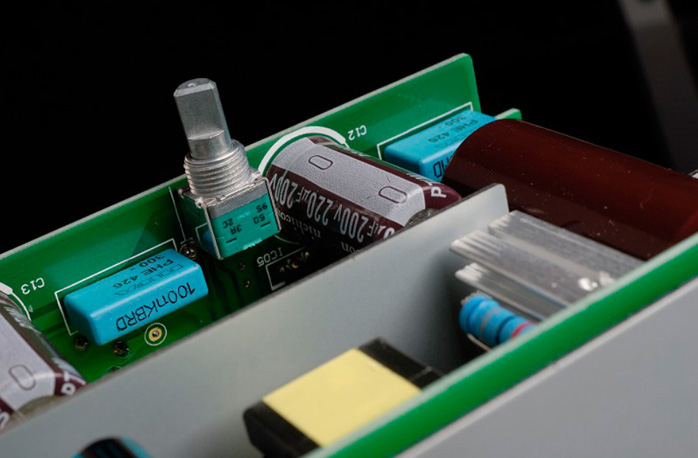This review page is supported in part by the sponsors whose ad banners are displayed below |
 |
 |
The sound of the 6F3 is clearly voiced. One cannot talk of an even balance between the different bands of the audible range. The result was closest perhaps to what I encountered with the Cambridge Audio Azur 340A SE and Denon PMA-510AE relative to the withdrawal of lower frequencies between 100 – 400Hz. The tonal balance was thus upshifted toward the midrange and treble. For any of these competitors this requires great care with suitable loudspeakers. In general you should lean toward warm rather than bass-heavy speakers. None of these amps were bad. They were simply budget devices where the extent of compromise is greater than it is higher up on the balance sheet.
|
 |
The Chinese valve amp had a similar tonal balance so speaker choice is key. However, this amp’s performance was on a completely different level than the competition and in certain regards even better than more expensive models in their catalogues. Even the NAD which is so very even in what it does cannot match the Synergy amp in certain aspects.
|
|
|
Here I refer to the quality of the midrange and treble. All transistor amps mentioned—you could add equivalent models from Advance Acoustics and such—are far more refined than solid-state equipment used to be just three or four years ago. This ‘refinement’ relies on a slight softening of treble output and shaping it to be less mechanical, stiff or ‘transistory’. This sonic reclamation of entry-level hifi has been successful to where we can enjoy the music in a comfortable pleasing fashion.
|
|
Synergy fully exploits the fact that their circuit amplifies with tubes. It commits no errors. It doesn’t warm up the sound, it does not muddy up anything, it does not forgive or prettify. Even so it goes to work with a far richer palette of timbres and superior far quicker transients. This isn’t about dynamics (more about those momentarily) but a better differentiation of leading edges, performer outlines and microdynamic shading. Treble and midrange are just a tad soft but in the good sense of that term. They simply avoid stiffness or hardness. Once such valve sound is heard, it will assert itself on many occasions even if it involves certain tradeoffs.
|
|
|
Despite being slightly soft, the 6F3 is incredibly vivid. The cymbals on especially good Jazz recordings are beautifully illuminated though not emphasized or sharpened. This is actually one of the trademarks of this amp. It doesn’t sharpen a thing, not even slightly. That’s a common concern with budget amps. Their loss of weight in the lower registers enforces a certain perception.
|
 |
Here clarity isn’t achieved by a hardening or brightening of transients but by superior resolution. Compared to the competition this amp copes far better with a greater variety of musical styles to sound like a much bigger more powerful amp. Yes it is a shock that something this small can work at all but once we let it sink in and overcome the disconnect between what we see and hear, we realize that in a normal room up to 25m² and with the right speaker we can play quite loud. That’s because tube clipping occurs softly and not abruptly as with transistors. We shouldn’t exaggerate of course but there’s really no need. With the Chario Academy Sonnet loudspeakers, the volume knob in my room usually sat at 13:00.
|
 |
  |
 |